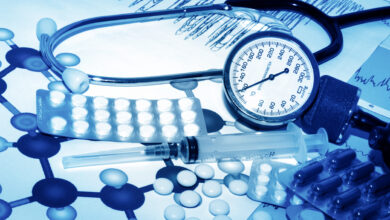GUIDELINES FOR DIAGNOSING HIGH BLOOD PRESSURE

Americans are constantly being encouraged to control their blood pressure. Hypertension is a serious health hazard that leads to many of the major problems that alter our lives and even end them. It is very important, then, to diagnose HBP early and treat it effectively to prevent the catastrophic consequences it can cause.
Knowing what is and what isn’t high blood pressure is the first step in the prevention of the many adverse outcomes from the disorder. If your baseline reference point is skewed, you’ll think your BP is ok when it really isn’t, and the harmful effects of high blood pressure on your body go on undetected. For example: everyone knows a BP of 180/100 is too high. But many folks think a BP of 138/88 is ok and don’t realize that it should be treated.
The International Society of Hypertension (ISH), based in the United Kingdom, has published guidelines for the diagnosis and treatment of high blood pressure since 1966. Their recent criteria have become far more stringently defined, and the methods of measuring blood pressure have recently been refined to reflect better certainty of the diagnosis.
The ISH recommends the blood pressure be checked in the doctor’s office, of course, but feel that readings taken at home or in an “ambulatory” state are for more accurate, more consistent, and better elicit the risk of organ damage from high blood pressure. Here’s what they say:
In the doctor’s office, a BP of 140/90 or greater is HYPERTENSION
At home, a BP of 135/85 or greater is HYPERTENSION
During 24-ambulatory BP monitoring, a BP of 130/80 or greater is HYPERTENSION
Out of office BP readings can easily tell if those high office readings are due to the “White Coat Effect,” or what’s called White Coat Hypertension, ie. the doctor makes me nervous and in the office my BP goes up.
Multiple BP readings are also important to get a overall assessment of the patient’s daily fluctuations. This can be done by sample readings at various times of the day and in various living situations. “Hypertension should only be diagnosed by a single BP reading if the measurement is 180/110, or higher, with evidence of cardiovascular disease requiring immediate treatment.”
The ISH also classes hypertension into two “grades:”
GRADE 1 HYPERTENSION—BP level 160/100 or less
GRADE 2 HYPERTENSION—BP level 160/100 or greater
These “grades” are important only for classification purposes and in determining drug therapy.
Once the diagnosis of HTN is firmly established, a search for cardiovascular disease risk factors begins. Does the the patient also have diabetes, obesity, high cholesterol, or use tobacco products?
Effort is directed, as well, toward determining if the HTN has been severe enough to cause “end-organ damage” ie. has high blood pressure been bad enough for long enough to have an effect on the heart, kidneys, blood vessels, and eyes.
Based on all these data and criteria, after lifestyle alterations, appropriate drug therapy is indicated—see the “Common Sense Treatment of High Blood Pressure” blogpost.
The bottom line here is that the threshold for treatment of high blood pressure has been lowered significantly AND the most accurate and reliable readings for making the diagnosis of Hypertension are those taken at home or during ambulatory BP monitoring. Office readings can be misleading.
Hypertension is so insidious and, ultimately, so harmful that even the slightest elevation is worrisome and should be treated aggressively. Hundreds of studies have conclusively proven that aggressive BP treatment has long-term protective effects, and that small elevations of BP are more harmful than was previously thought.
The next hurdle becomes drug therapy adherence (compliance used to be the term). Getting people to take a medicine that has side effects for a condition that has no symptoms can be challenging. The physician must constantly remind the patient of the risks of HBP and the importance of taking his medication. That can be a problem. But that’s our job, and we must do all we can to convince the patient to comply with all aspects of care. Their life really does depend on it.
Dr. G’s Opinion: The threshold of blood pressure above which a person is considered to have hypertension keeps getting lower and lower. It used to be said that 120 mm Hg plus your age was acceptable—up to a point. For me, that would be a reading of 197/80–that would be stroke level! Studies have repeatedly shown the lower the BP the better. That axiom results in a lower incidence of stroke, heart attack, kidney failure, etc. To achieve that result, patients must take their medicine regularly and adopt recommended lifestyle changes. Many have a hard time with that. Doctors need to make every effort possible to encourage patients to adhere to treatment and remind them of the many bad things that can happen. Having a heart attack can be fatal, having a stroke is terrible, and kidney damage results in dialysis. So, if you have high blood pressure, reduce the chance of having these problems by taking your medicine.
Reference: Practice Guidelines Hypertension: New Guidelines from the International Society of Hypertension Am Fam Phys 2021June15;103(12):763-765.




